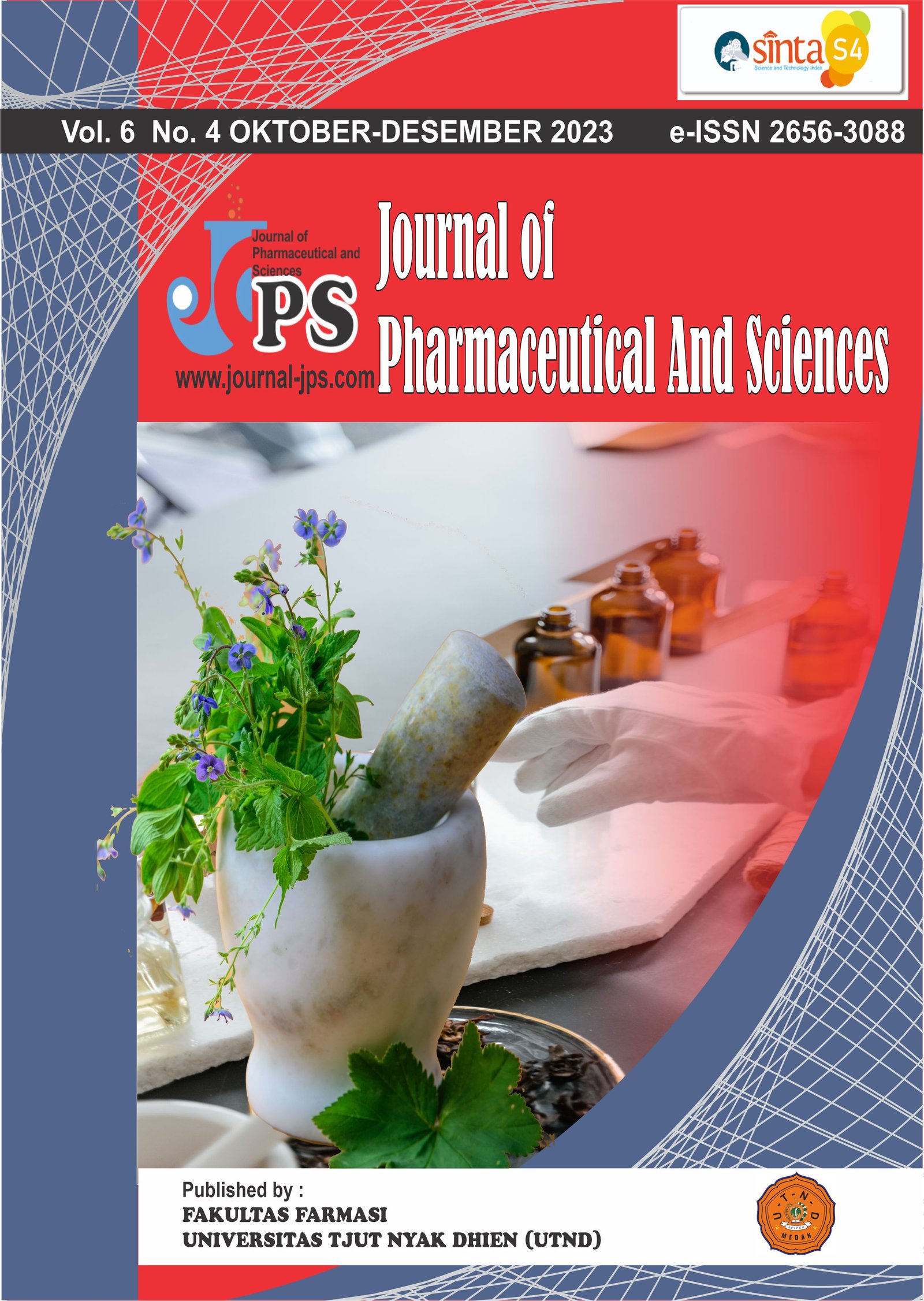Preparation of microcrystalline cellulose from carrots (Daucus carota L.) with avicel PH 102 as a comparison and evaluation of physical quality
Main Article Content
Page: 1769-1777
Abstract
Carrots (Daucus carota L.) are vegetable types of annuals because they only produce once and then die. Carrot tubers are reddish-yellow due to the high content of carotene. Microcrystalline cellulose is one of the excipients (additives) in tablet preparations, namely as a filler, which is considered a binding agent because it can increase the compactness ability of tablets from compression mixtures. Microcrystalline cellulose comes from natural resources containing lignocellulose fibers such as wood and non-wood. One of the abundant fibrous plants in Indonesia is carrots (Daucus carota L.). The main chemical composition of carrots includes carbohydrates, namely dietary fiber (hemicellulose, cellulose), starch, and several types of sugar. This research aimed to determine whether carrot cellulose (Daucus carota L.) can be made into microcrystalline cellulose and compare the physical quality of carrot cellulose microcrystalline results with Avicel PH 102. Microcrystalline cellulose is made by a delignification process using 15% NaOH, followed by a bleaching process using 3.5% NaOCl, and then continued with a hydrolysis process with HCl 2.5N. Then, microcrystalline cellulose is carried out a physical quality evaluation, which includes organoleptic, identification, pH, solubility of substances in water, shrinkage of dryers, and starch. The results of the research showed that carrots can be made into microcrystalline cellulose, namely with the results of physical quality evaluation compared to Avicel PH 102, organoleptic powder, odorless, tasteless, and yellowish white (microcrystalline cellulose) and white (Avicel PH 102); identification, each of which produces a blue-violet color; pH 5.67 and 6.5; the solubility of substances in water is 0.1% each; drying shrinkage 4.70% and 2.53%; and starch, respectively not formed violet blue solution.
Downloads
Article Details

This work is licensed under a Creative Commons Attribution-NonCommercial-ShareAlike 4.0 International License.
References
Agustin, N., & Abdassah, M. (2021). Isolasi dan Karakterisasi Selulosa Mikrokristal dari Nanas (Ananas comosus (L.) Merr) Isolation and Characterization of Microcrystalline Cellulose from Pineapple (Ananas comosus (L.) Merr). Pharmaceutical Journal of Indonesia, 18(01), 111–121.
British Pharmacopoeia (Volume I). (2009). The Stationery Office.
British. (2002). Pharmacopoeia. The Stationery Office.
Carlin, B. (2008). Compression and The Role of Filler-Binders. Dalam : Augsburger, L.L., Hoag, S.W. (Eds.). Pharmaceutical Dosage Forms: Tablets, Informa, 173–216.
Chauhan, Y. P., SAPKAL, R. S., SAPKAL, V. S., & ZAMRE, G. S. (2009). Microcrystalline cellulose from cotton rags (waste from garment and hosiery industries). 7(2), 681–688.
Halim, A., Sahlan, ben elfi, & Sulastri, E. (2002). Pembuatan Mikrokristalin Selulosa dari Jerami Padi (Oryza sativa Linn) dengan Variasi Waktu Hidrolisa. Sains Dan Teknologi Farmasi, 7(2), 80–87.
Ilindra, A., & Dhake, J. D. (2008). Microcrystalline cellulose from bagasse and rice straw. Indian Journal of Chemical Technology, 15(5), 497–499.
Jahan, M. S., Saeed, A., He, Z., & Ni, Y. (2011). Jute as raw material for the preparation of microcrystalline cellulose. Cellulose, 18(2), 451–459. https://doi.org/10.1007/s10570-010-9481-z
Ningsi, S.. N. I. M. W. & S. S. (2020). Karakterisasi Mikrokristalin Selulosa Dari Kulit Jagung Pulut(Zea mays L. Var Ceratina Kulesh). Jurnal Kesehatan, December, 53–59.
Ohwoavworhua, et al. (2005). Some Physical Characteristics of Microcrystalline Cellulose Obtained from Raw Cotton of Cochlospermum planchonii. Tropical Journal of Pharmaceutical Research, 4(2), 501–507.
Rockville, M. . (2007). United States Pharmacopeia 30 and National Formulary 25. United States Pharmacopeial Convention.
Siregar, C. J. ., & Wikarsa, S. (2010). Teknologi Farmasi Sediaan Tablet: Dasar-Dasar Praktis. EGC.
Sobari, E., & Fathurohman, F. (2017). Efektifitas Penyiangan Terhadap Hasil Tanaman Wortel (Daucus carota L.) Lokal Cipanas Bogor. Jurnal Biodjati, 2(1), 1. https://doi.org/10.15575/biodjati.v2i1.1292
Steven, Mardiyati, & Suratman, R. (2014). Pembuatan Mikrokristalin Selulosa Rotan Manau (Calamus Manan Sp.) Serta Karakterisasinya. Jurnal Selulosa, 4(02), 89–96. https://doi.org/10.25269/jsel.v4i02.84





